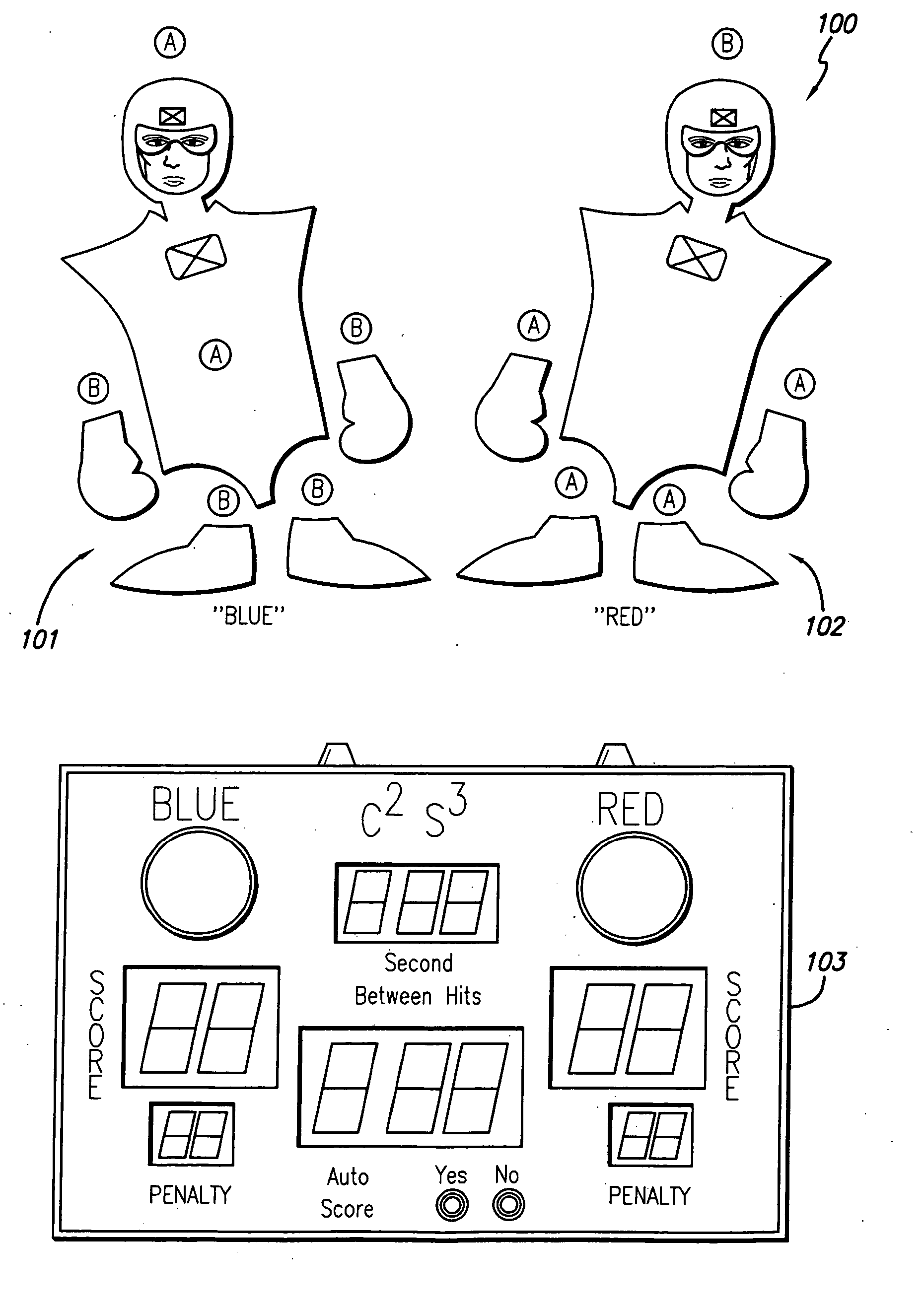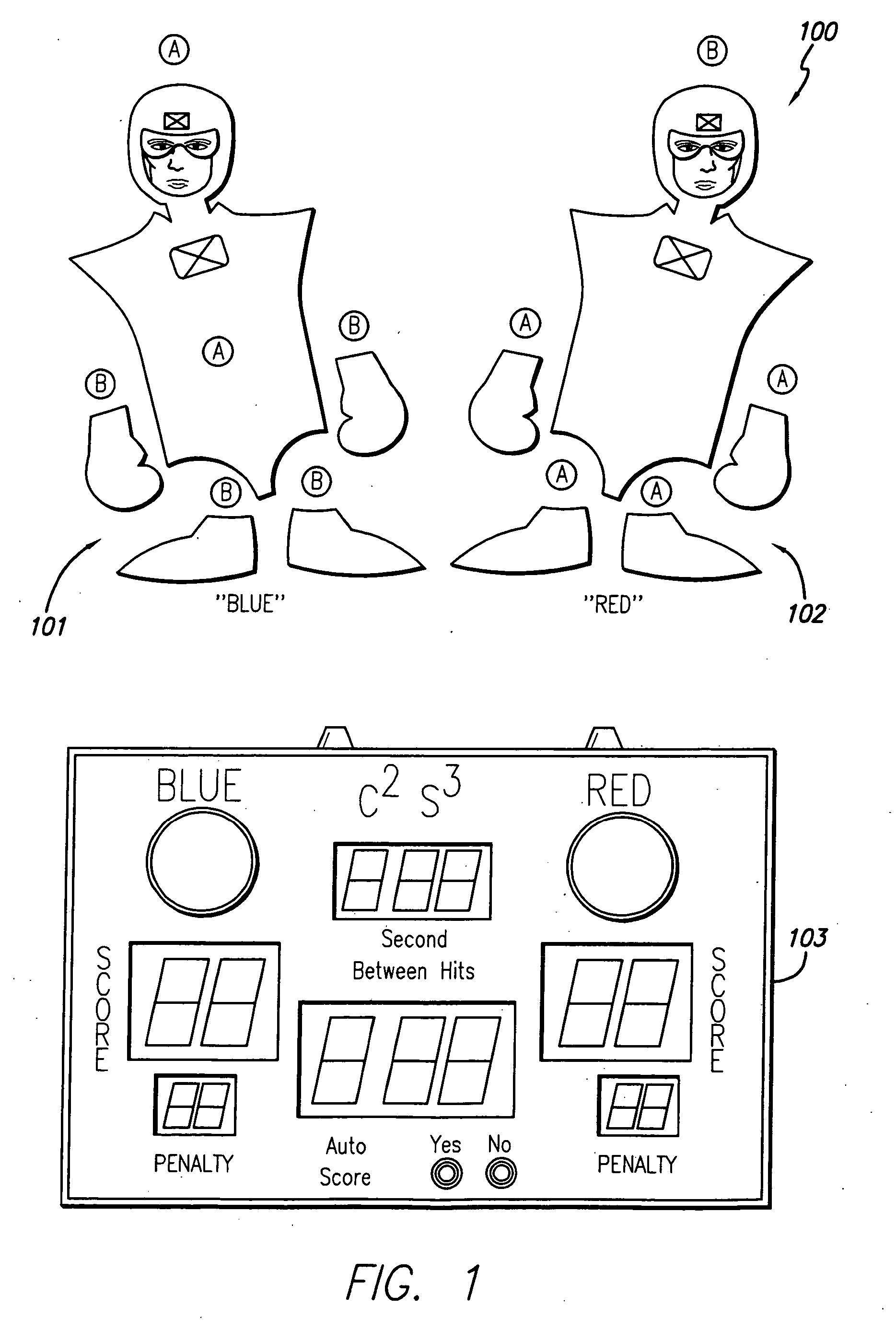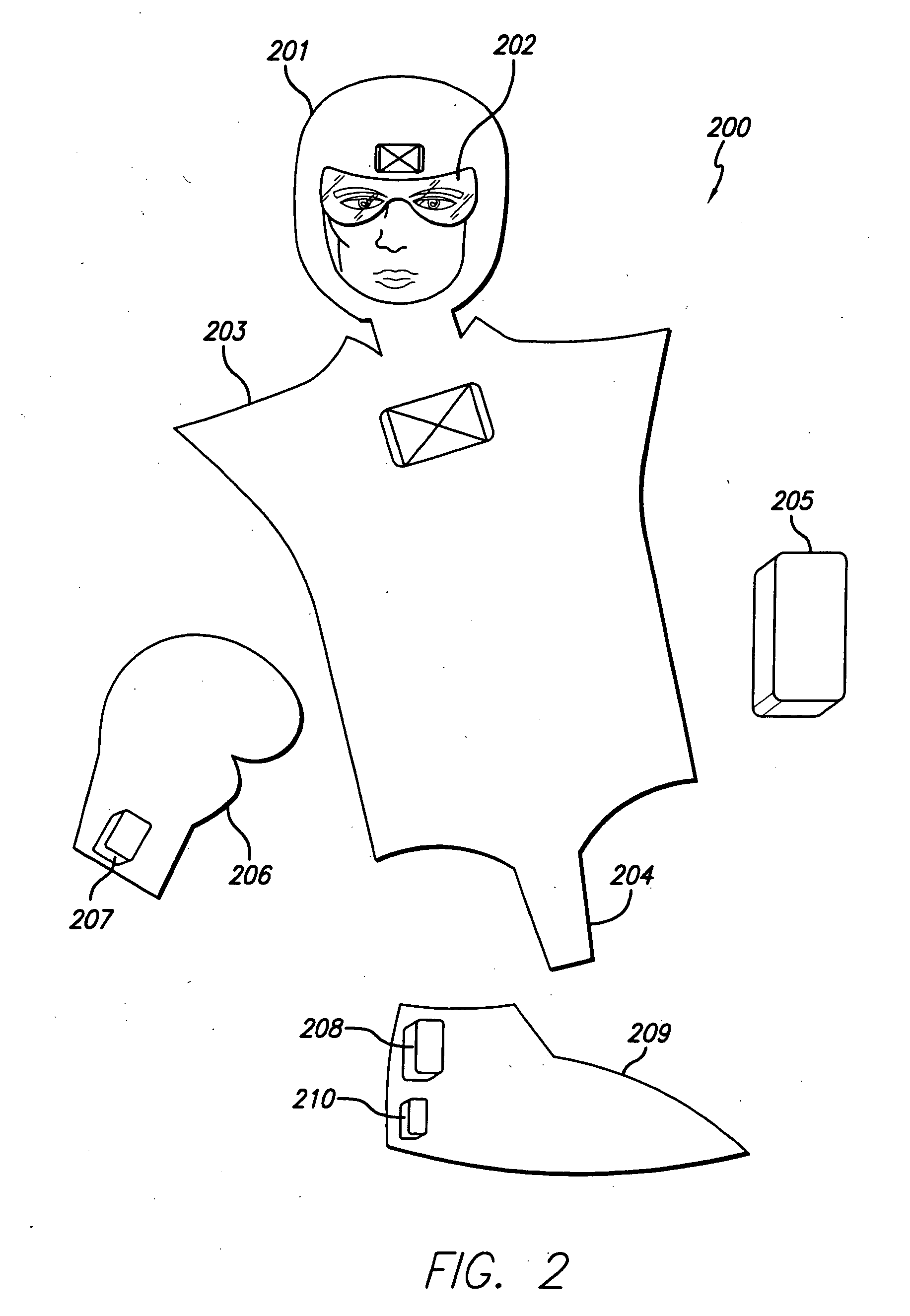Contact detection system and method
a technology of contact detection and detection system, applied in the field of contact detection and to contact sports, can solve problems such as excessive contact, fighter disqualification or refusal of points, and potential serious injury, and achieve the effects of avoiding serious injury, improper awarding of points, and avoiding conta
- Summary
- Abstract
- Description
- Claims
- Application Information
AI Technical Summary
Benefits of technology
Problems solved by technology
Method used
Image
Examples
Embodiment Construction
[0040]FIG. 1 shows a karate scoring system 100 comprising a scoreboard 103 and two opposing combatants, combatant 101 sporting a “blue” uniform and the other combatant 102 sporting a red uniform. The small circles with the letters “A” or “B” inside indicate the tone-generating frequency and its corresponding tone-detecting frequency. For example, the gloves and the boots of combatant 101 are labeled “B” and the vest and the headgear of combatant 102 are labeled “B.” This labeling indicates that the tone generated in the B-labeled gloves and boots are only detectable by the vest and headgear labeled “B” but not detectable by the vest and headgear labeled “A.” Similarly, the tone generated in the A-labeled gloves and boots are only detectable by the vest and headgear labeled “A” but not detectable by those labeled “B.” This configuration eliminates the problem of self-activation plaguing the pressure sensitive designs. The scoreboard 103 is, in this embodiment, a software-controlled s...
PUM
 Login to View More
Login to View More Abstract
Description
Claims
Application Information
 Login to View More
Login to View More - R&D
- Intellectual Property
- Life Sciences
- Materials
- Tech Scout
- Unparalleled Data Quality
- Higher Quality Content
- 60% Fewer Hallucinations
Browse by: Latest US Patents, China's latest patents, Technical Efficacy Thesaurus, Application Domain, Technology Topic, Popular Technical Reports.
© 2025 PatSnap. All rights reserved.Legal|Privacy policy|Modern Slavery Act Transparency Statement|Sitemap|About US| Contact US: help@patsnap.com



